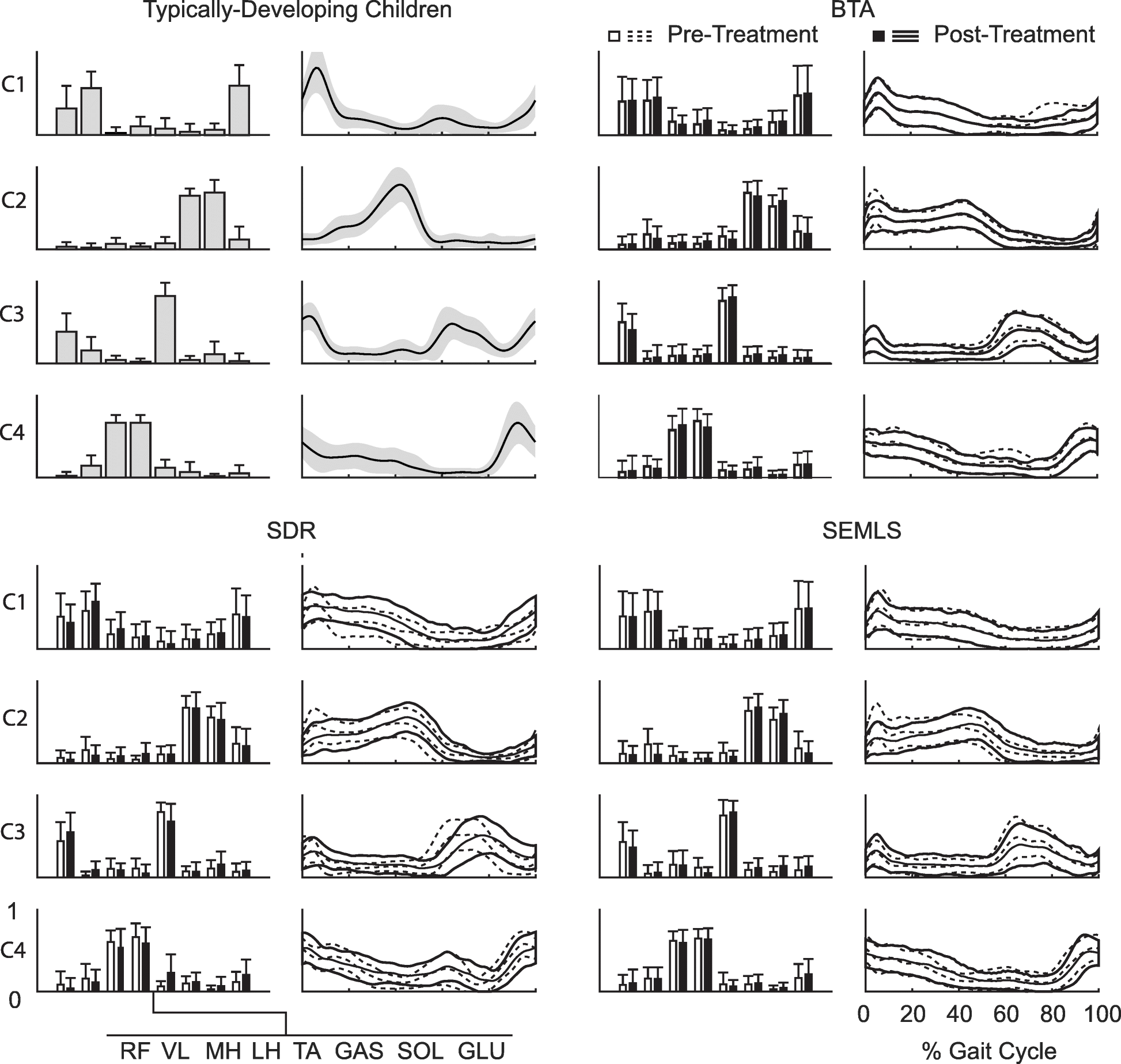Journal Article in Journal of NeuroEngineering and Rehabilitation:
In collaboration with University Hospital Pellenberg we examined whether muscle synergies change following common treatments in CP.
 Background: Children with cerebral palsy (CP) have altered synergies compared to typically-developing peers, reflecting different neuromuscular control strategies used to move. While these children receive a variety of treatments to improve gait, whether synergies change after treatment, or are associated with treatment outcomes, remains unknown.
Background: Children with cerebral palsy (CP) have altered synergies compared to typically-developing peers, reflecting different neuromuscular control strategies used to move. While these children receive a variety of treatments to improve gait, whether synergies change after treatment, or are associated with treatment outcomes, remains unknown.
Methods: We evaluated synergies for 147 children with CP before and after three common treatments: botulinum toxin type-A injection (n = 52), selective dorsal rhizotomy (n = 38), and multi-level orthopaedic surgery (n = 57). Changes in synergy complexity were measured by the number of synergies required to explain > 90% of the total variance in electromyography data and total variance accounted for by one synergy. Synergy weights and activations before and after treatment were compared using the cosine similarity relative to average synergies of 31 typically-developing (TD) peers.
Results: There were minimal changes in synergies after treatment despite changes in walking patterns. Number of synergies did not change significantly for any treatment group. Total variance accounted for by one synergy increased (i.e., moved further from TD peers) after botulinum toxin type-A injection (1.3%) and selective dorsal rhizotomy (1.9%), but the change was small. Synergy weights did not change for any treatment group (average 0.001 ± 0.10), but synergy activations after selective dorsal rhizotomy did change and were less similar to TD peers (− 0.03 ± 0.07). Only changes in synergy activations were associated with changes in gait kinematics or walking speed after treatment. Children with synergy activations more similar to TD peers after treatment had greater improvements in gait.
Conclusions: While many of these children received significant surgical procedures and prolonged rehabilitation, the minimal changes in synergies after treatment highlight the challenges in altering neuromuscular control in CP. Development of treatment strategies that directly target impaired control or are optimized to an individual’s unique control may be required to improve walking function.
